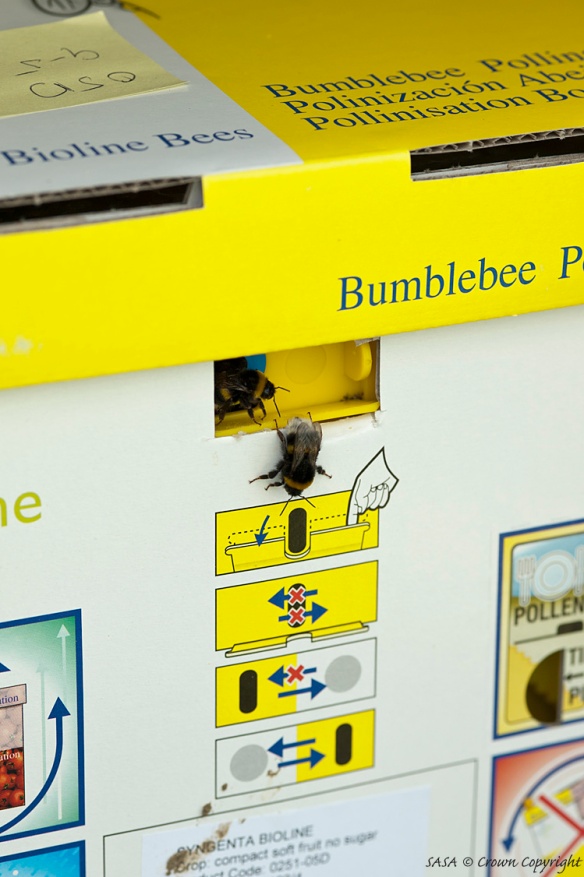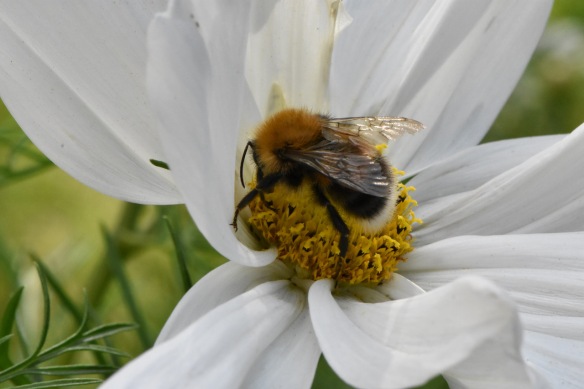Our guest blog today comes from Luke Woodford, who recently completed a period working with Science and Advice for Scottish Agriculture. His project looked at pathogens in bumblebee species and explored potential for a biology tool that would make screening easier and quicker.

Pollinating insects are essential for many crop and wildflower species across Scotland. But increasingly, the demand for pollination exceeds the capacity of local pollinating species1, leading farmers to bring in commercially reared bees to supplement wild pollination. But what is the effect on native species, and do these new arrivals bring with them pathogens that could be damaging to local pollinators?
As part of the ‘Pollinator Strategy for Scotland’ – a 10-year plan aiming to improve pollinator health as well as our awareness and understanding of pollinators – I undertook a 3-month project at SASA (Science and Advice for Scottish Agriculture), developing a molecular biology tool to rapidly screen for some of the most common pathogens transmitted between bumblebee species.
Many farmers now import bumblebee nest boxes and place them in poly-tunnels to pollinate crops such as soft fruits. As a method of crop pollination, it’s rapid and efficient, but importing species into an ecosystem will always have an effect on existing inhabitants, especially fellow pollinators such as native bumblebees, hoverflies and butterflies. These species could be negatively affected by the sudden need to share resources, and the imported species could be carrying pathogens that may then spill over into the native pollinator population. Reports have shown that numbers of pollinating insects are decreasing at an alarming rate2, so it is ever more important that we understand and monitor the spread of potentially harmful pathogens between wild and managed pollinators in local habitats.

To develop the screening tool, we first identified key bumblebee pathogens from the scientific literature, before design and optimisation work in the lab. Through repeated testing and refinement, a protocol was established that could determine if any of the key pathogens were present in a sample. With this sensitive and specific tool, SASA will now be able to quickly and cost-effectively screen selected samples from bumblebee boxes as part of their import inspection programme. The system can screen for Crithidia, Nosema, Apicystis and Locustacarus, all well-known bumblebee pathogens3,4.

This tool will support the pollinator strategy by enabling SASA to quickly identify potential pathogens introduced with imported pollinators. In this way, we will be able to identify the source of such pathogens and aim to contain them before they can spread to native pollinators. SASA would also be able to report back to the suppliers of these imported bees and help them to improve the disease screening that they perform prior to shipment.

A further step in my work at SASA involved using a next generation DNA sequencing tool, the Oxford Nanopore MinION5, to screen bumblebees for unknown pathogens (shown connected to a PC in image above). We were aiming to detect any pathogens which aren’t routinely reported or known as pathogens of bumblebees, but which could be emerging threats. This work lays the foundation for SASA to develop screening for emerging diseases in pollinators. This would allow monitoring of low-level threats to native pollinators, which could prevent a major outbreak before it reaches a critical level, and identification of pathogens carried by bumblebees that may impact other parts of the ecosystem, such as crops.
Further reading:
1-https://www.sciencedirect.com/science/article/pii/S0960982209009828
2-https://www.sciencemag.org/news/2017/05/where-have-all-insects-gone
3-https://besjournals.onlinelibrary.wiley.com/doi/full/10.1111/1365-2664.12134
4- Colla S. R. et al (2006), Plight of the bumblebee pathogen spillover from commercial to wild populations. Biological conservation 129 (461-467) doi:10.1016/j.biocon.2005.11.013




 We recently attended workshops held in Glasgow, North Ayrshire and Edinburgh which tapped into local knowledge to both map existing beneficial habitats and identify where action could be taken to create links and habitat rich corridors.
We recently attended workshops held in Glasgow, North Ayrshire and Edinburgh which tapped into local knowledge to both map existing beneficial habitats and identify where action could be taken to create links and habitat rich corridors. The drive will now be on to encourage the developments of an increased B-lines network and look for opportunities to restore and create new wildflower rich habitats. Planting more wildflower meadows will provide vital food sources and adding grasslands and perhaps hedgerows will increase potential nesting sites. Connectivity is the key and that race is on now to maximise what we have and create what we don’t.
The drive will now be on to encourage the developments of an increased B-lines network and look for opportunities to restore and create new wildflower rich habitats. Planting more wildflower meadows will provide vital food sources and adding grasslands and perhaps hedgerows will increase potential nesting sites. Connectivity is the key and that race is on now to maximise what we have and create what we don’t.



